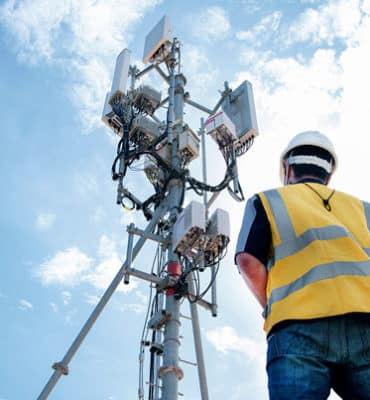
Energy
Technology is increasingly changing the energy market and industry. In fact, it’s no exaggeration to say that IT solutions for energy sources and utility companies streamline operations and ensure effective communication throughout the company.
Our IT solutions include visibility over the inventory, monitoring, logistics, operations, and tracking in order to reduce construction costs as well as overhead. This includes all the segments, for example Oil, Gas and Chemicals, Power and Utilities, Mining and Metals.
Our team assesses clients on how to address common issues such as environmental and regulatory compliance, old IT infrastructure, high operating costs, and inefficient supply chains. Our IT energy solutions include digital transformation, mobility, cloud, data and analytics, and more efficient technologies. Our corporate energy management solutions guarantee applications security and extensive support for networked devices.
Our Offerings for The Energy Sector
Leak detection solution
DigitalCook experts develop specialized solutions that help companies efficiently monitor oil and gas pipelines to significantly reduce the risk of spills and ensure employee and environmental safety.
Predictive maintenance for refineries and plants
Our best-in-class maintenance solutions enable refineries or plants to identify potential failures in key equipment using predictive analytics.
Generation
DigitalCook offers comprehensive power plant solutions with mobility and analytics to optimize resource utilization and increase operational efficiency.
Fleet management
Our fleet management solutions help reduce risk, increase safety and streamline fleet operations using effective real-time GPS tracking and fleet monitoring.
Terminal automation system
By leveraging the terminal’s integrated automation system, we enable companies to streamline the entire product handling process from reception to distribution.
Our IT Services and Solutions
How Digitizing the Energy Sector Can Help Your Company Thrive
There are multiple ways digitization can improve the energy sectors. These ways include:
Extending Underground Cable Life with Intelligent Sensors
Intact power lines are vital for reliable power distribution. For network operators, the replacement of defective line sections means harmful downtime and high costs. As a result, procedures and processes that extend the life of energy cables are a good optimization path with significant potential savings for network operators. One way our digital solutions can help your business is through using smart sensors to constantly monitor underground cable temperatures to keep operating temperatures under control. If the cable temperature rises too much, the grid operator can take immediate action. This process prolongs the life span of energy cables and decreases replacement costs.
Reliable transmission technology under various environmental conditions and cables with sensors are essential for the use of intelligent internet-of-things IoT sensors. In conjunction with mathematical models based on big data techniques, the collected data can be used to optimize power flow. For example, the energy supplier can then take measures to reduce the flow or redistribute the load. The technology can also be used to remotely read electricity, gas and water meters and control switching devices.
Reduction of load intervention in the power grid:
The supply of renewable energy to the power grid and imperfect information about individual power plants can lead to fluctuations in load flows that are difficult to predict. As a result, transmission system operators manually intervene in the generation of power plants and distributed generation systems to protect transmission line sections. This causes costs on the order of $3 million each year, according to the Federal Energy and Water Management Association.
Big data analytics can be used to gain new insights into the interaction of individual aspects, enabling energy suppliers to analyze individual transformer input/output curves, performance measurements from wind and solar farms, weather You can combine various data sources, such as forecasts, to create forecasts. These insights provide transparency into how individual and generating assets affect substation node loads, allowing businesses to act early and reduce costs in the event of overload. You can avoid such reshipment measures.
The supply of renewable energy to the power grid with not enough data about individual power plants can lead to fluctuations in load flows that are difficult to predict. As a result, transmission system operators manually intervene in the generation of power plants and distributed generation systems to protect transmission line sections. This causes costs on the order of $3 million each year, according to the Federal Energy and Water Management Association.
Big data analytics can be used to gain new insights into the mutual influence of individual aspects, enabling energy suppliers to analyze individual transformer input or output curves, performance measurements from wind and solar farms. These insights provide transparency into how individual and generation assets affect substation node loads, allowing companies to act early and reduce expensive resources in the event of overload.
Improving Customer Satisfaction with Big Data Analysis
Utility companies face intense competition. As a result, customer retention is a key issue for them. By constantly measuring and analyzing needs, wants and satisfaction, individual services, special offers and other means can be used to enhance customer satisfaction and loyalty over the long term.
An energy company can use big data analytics to analyze user behavior on the website or portal and gauge opinions about the brand and products on social media. By combining this data with other insights, such as online surveys, you can gain insight into customer needs and align your marketing and sales efforts in a more targeted way. By improving customer communication, energy companies can retain customers for the long term.












